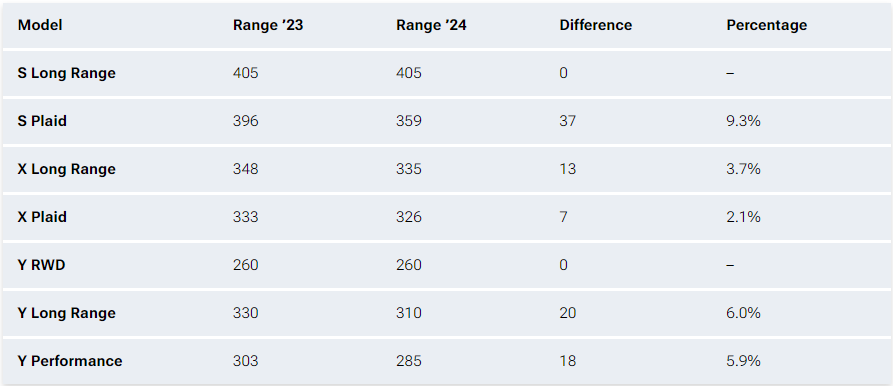Tesla, recognized for its electric vehicles’ efficiency and range, has revised its range estimates for specific models – Model S, Model X, and Model Y – in response to updates in the Environmental Protection Agency’s (EPA) range testing regulations. The adjustments, ranging up to 9.3%, reflect a shift in the EPA’s testing approach, now requiring multiple drive modes for range tests instead of the most efficient one, ensuring a more realistic reflection of real-world performance.
Internal documents obtained by DriveTesla indicate that the EPA’s revised requirements, coupled with “comfort and functionality improvements,” contribute to higher energy consumption from the batteries, resulting in the reduced range estimates. Notably, the Tesla Model 3’s range estimate remains unchanged.
These modifications coincide with ongoing scrutiny faced by Tesla, with reports of investigations and lawsuits surrounding alleged “grossly overstated” range claims. The company acknowledged requests for information from government agencies regarding matters related to personal benefits, vehicle range, and personnel decisions, as disclosed to the U.S. Securities and Exchange Commission.
In California, Tesla is confronted with a class-action lawsuit filed by drivers who claim the automaker overestimated ranges. Leaked files reveal the establishment of a response team within Tesla to manage a surge in customer complaints about range-related issues. The team reportedly aimed to minimize service appointments cancellations.
As Tesla adapts its range estimates, the broader implications and responses to government inquiries and legal challenges remain to be seen. The adjustments raise questions about the accuracy of initial range claims and whether they align with real-world driving conditions, placing Tesla under increased scrutiny.


